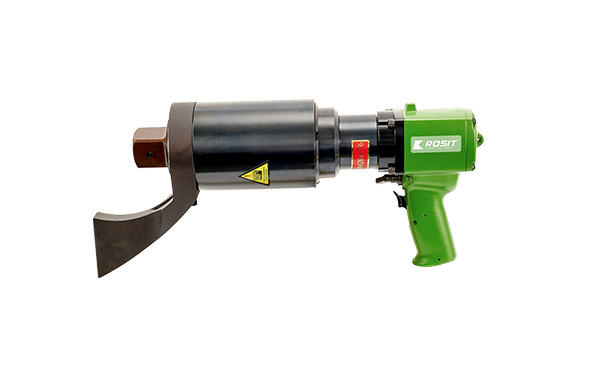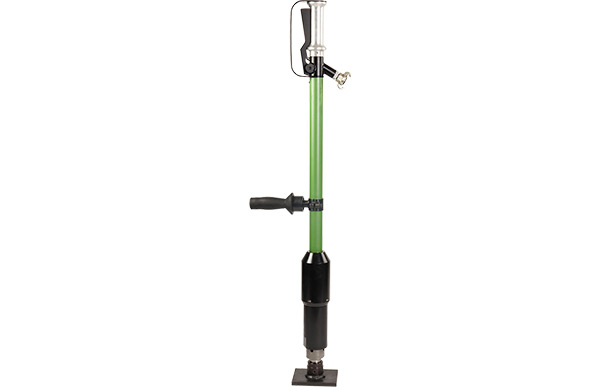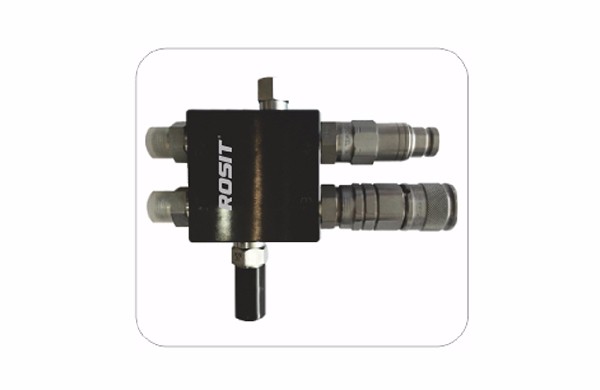- Power Tools
-

Saws
Chain Saw Concrete Chain Saw Band Saw Reciprocating Saw ...
-

Cutters
Pneumatic Cutter Pipe Cutting Machine Nut Cutter
-

Drills
Hammer Drill Pistol Hammer Drill Two Hand Operation Drill Column Drill ...
-

Impact Wrenches
Pneumatic Impact Wrench (Ex-proof Series) Pneumatic Impact Wrench (Ultra light Series) Emulsion Impact Wrench Nut Runner ...
-

Torque Wrenches
Pneumatic Torque Wrench Electric Torque Wrench Hydraulic Torque Wrench Hollow Hydraulic Wrench ...
-

Mining Waterjet Cutting Machine
Electric Mining Waterjet Cutting Machine Pneumatic Mining Waterjet Cutting Machine Emulsion Mining Waterjet Cutting Machine
-

Hammers
Pneumatic Chipping Hammer Hydraulic Chipping Hammer
-

Scaler
Pneumatic Long Reach Scaler
-

Rammer
Pneumatic Rammer
-

Grinders
Wet Grinder Angel Grinder Electric Grinder
-

Fan
Pneumatic Fan Heavy Fixed Fan
-

Hoist
Chain Hoist Electric Hoist Pneumatic Hoist Hydraulic Hoist ...
-

Winch
Pneumatic Winch
-

Pump
Pneumatic Submersible Pump Emulsion Submersible Pump
-

Assembly
Torque Multipler C-Hog Ring Plier
-
- Accessories
-

Cutting
Chainsaw Concrete Chainsaw Band Saw Reciprocating Saw ...
-

Drilling
Impact Drills Light Drills Magnetic Drills丨Rail Drills Balance Drills丨Angle Drills ...
-

Assembly
Impact Wrenches C-Hog Ring Plier
-

Hammer & Shovel
Chipping Hammer Derusting Shovel
-

Grinding
Grinders
-

Hydraulic Accessories
Nut Runner Cutter
-

General Accessories
Waterjet Cutting Machine Filter assy. Filter assy. Water Pump ...
-
- Company Profile
- Service
- News
-

Events
The 21st 2023 Taiyuan Coal (En The 17th Yulin International C The 20th TaiYuan (2021) Coal ( The 16th Ordors International Have a machine repaired or hav ...
-

Case Study
Specifications of adjustable w Have a machine repaired or hav
-

Industry News
Using Chainsaws to Cut Snow? What to do if the pneumatic wr Hydraulic chain saw Operation of the wrench Introduction to the principle ...
-
- Download
- Contact
How is melt blown cloth formed?
source:Industry News release time:2021-08-18 Article author:Rosit Popular:Air band saw
The melt blowing method is also one of the direct polymer web forming methods. It is to extrude the polymer melt extruded by the screw extruder by blowing with high-speed and high-temperature airflow or other means to cause the melt stream to be extremely stretched. The very fine fibers are formed, and then gathered on a web forming drum or a web forming curtain to form a web, which is finally strengthened by self-adhesive action to make a meltblown fiber nonwoven fabric.
1. Similarities and differences with spunbond
Also known as the direct spinning method, it uses melt spinning and other methods to spread the continuous filaments formed by melt spinning and stretching of polymer chips, and then make products through processes such as bonding and finishing.
a Same point
① The polymer must be extruded from the spinneret in the molten state
② The fiber web can be strengthened into a non-woven fabric through thermal bonding (surface bonding or point bonding) or self-bonding
b Difference
①In the spunbonding method: cooling by quenching air and stretching at the same time to form continuous filaments, which are laid on the net curtain
In the melt-blown method: high-speed hot air blowing and extreme stretching to form ultra-fine short fibers, which fly to the netting curtain or condensing drum at a very high speed to form a web
② Spunbond method: There are many ways to strengthen the web. In addition to thermal bonding, needle punching, spunlacing, chemical bonding and other methods can also be adopted.
Melt-blown method: mainly rely on thermal bonding or self-bonding
2. Traditional process
Polymer feeding→melt extrusion→fiber formation→fiber cooling→web forming→bonding (fixed web)→trimming and winding→after finishing or special finishing
Feeding —— The polymer is generally made into small spherical or granular slices, poured into a bucket or hopper, and fed into the screw extruder
Melt extrusion—— At the feeding end of the screw extruder, the polymer chips should be mixed with stabilizers, brighteners and other additives and masterbatch and other necessary raw materials, after being fully stirred and mixed, they will enter the screw extruder and be heated. The melt is finally sent to the spinneret by the metering pump through the filter. In the melt blown process, the general extruder also uses its shearing and thermal degradation effects to reduce the molecular weight of the polymer.
Fiber formation —— The filtered clean melt passes through the distribution system, and then is evenly sent to each group of spinnerets to make the extrusion volume of each spinneret uniform. The spinneret of meltblown fiber is different from other spinning methods. The spinneret holes must be arranged in a straight line, and the upper and lower sides have high-speed air jet holes.
Fiber cooling-a large amount of room temperature air is sucked in at the same time on both sides of the spinneret, mixed with the hot air stream containing ultra-fine fibers to cool it down, and the molten ultra-fine fibers are cooled and solidified.
Netting——In the production of meltblown fiber nonwoven fabric, the spinneret can be placed horizontally or vertically. If placed horizontally, the superfine fibers are sprayed on a circular collecting drum to form a web; if placed vertically, the fibers fall onto a horizontally moving web forming curtain to condense into a web.
Adhesion (fixed net)-the self-adhesive reinforcement mentioned above is sufficient for some applications of melt blown cloth, such as: the fiber net is required to have a relatively fluffy structure, good air retention rate or porosity Wait. For many other applications, self-adhesive reinforcement alone is not enough. Hot-rolling bonding, ultrasonic bonding, or other reinforcement methods are also required. Hot roll bonding
Read recommendations:
GP21-060 Pneumatic Submersible Pump
related articles
Using Chainsaws to Cut Snow?
2024-05-21What to do if the pneumatic wrench is weak
2022-12-19Hydraulic chain saw
2022-12-13Operation of the wrench
2022-12-06Introduction to the principle of pneumatic wrench
2022-11-28How to use the pneumatic wrench
2022-11-21Brief introduction to the principle of pneumatic wrench
2022-11-14Impact pneumatic wrench
2022-11-07Correct hydraulic wrench operation procedure
2022-11-01Hydraulic wrench torque pressure conversion
2022-11-01Field operation procedure of hydraulic wrench
2022-10-24Hydraulic radial plunger motor
2022-10-17The history of hydraulic motors
2022-10-17Principle of balance hydraulic wrench
2022-10-10The Price Factor of Smart Electric Torque Wrench
2022-10-10Introduction to the advantages of using intelligent electric torque wrench
2022-10-10The Price Factor of Smart Electric Torque Wrench
2022-10-10Classification and use of wrenches
2022-10-10hydraulic wrench pressure conversion
2022-10-10Introduction to the advantages of the use of intelligent electric torque wrench
2022-10-10Smart Electric Torque Wrench Selection Guide
2022-10-10Intelligent electric torque wrench for wind power generation
2022-10-09Uses of open-end wrenches.Pneumatic chainsaw
2022-10-08What are the driving parts of a hydraulic wrench and what they do
2022-09-30What are the driving parts of a hydraulic wrench and what they do
2022-09-23the commonly used wrenches
2022-09-22Introduction of several common wrenches
2022-09-21Application scope and daily maintenance method of hydraulic bolt tensioner
2022-09-20Characteristics of hollow hydraulic wrench and precautions for use
2022-09-19Characteristics and precautions of driving hydraulic wrench
2022-09-17Power Tools
OW65-020 Split Emulsion Type Mining Waterjet Cutting Machine
2023-05-10LH22-005 Pneumatic Hoist
2023-06-29CD22-250 Pneumatic Concrete Chainsaw (5.0KW)
2020-06-13DP21-140 Pneumatic Two Hand Operation Drill
2021-06-15RH31-1400 Hydraulic Chipping Hammer
2023-06-27CC22-630 Pneumatic Chain Saw (5.0KW Series)
2023-06-14AN51-8000 Electric servo CNC Torque Wrench
2023-06-27DM21-045 Pneumatic Magnetic Drill
2022-12-15DP22-200 Pneumatic Column Drill
2023-06-19CB31-210 Hydraulic Band Saw
2023-05-18DL21-013 Pneumatic Pistol Hammer Drill
2021-06-10RC21-1800 Pneumatic Long Reach Scalers
2023-06-27AW22-2000 Pneumatic Impact Wrench (Ultra-Light Series)
2021-06-15AK21-065 Pneumatic C-Hog Ring Plier (1.5 coil)
2023-06-29AN23-750 Pneumatic Torque Wrench (Angle Shank)
2024-03-12OF27-100 Heavy Fixed Fan
2022-12-29DP21-080 Pneumatic Two Hand Operation Drill
2021-06-15CB61-310丨Emulsion Band Saw
2023-06-17DC11-100 Electric Core Drill
2023-01-03AN71-3500 Torque Multiplier
2023-06-29CC20-430 Pneumatic Chainsaw (3.0 kw Series)
2023-06-02AK22-065 Pneumatic C-Hog Ring Plier (2.0 coil)
2023-06-29GA21-100 Pneumatic Wet Grinder
2022-12-28CC20-630 Pneumatic Chainsaw (3.0 kw Series)
2023-06-14DC21-150 Pneumatic Core Drill
2023-01-03AN11-3000 Electric servo CNC Torque Wrench
2023-06-27CS21-030 Pneumatic Handheld Circular Saw
2021-06-08CR21-002 Light Pneumatic Reciprocating Saw
2021-06-07RH31-2100 Hydraulic Chipping Hammer
2022-12-27DC31-150 Hydraulic Core Drill
2023-01-03Accessories
Diamond Saw Blades
2023-06-06Filter assy.
2023-06-07Clamps
2023-06-06Abrasive Blades
2023-06-07Ex-proof Sleeves
2023-06-07Hard Alloy Hollow Drill Bits assy.丨DB84 Series
2023-06-07Pipe Fixed Clamps丨CB861-12
2023-06-06Ex-proof Sleeves KIT
2023-06-07Sleeve KIT
2023-06-07Alloy Guide Bars丨CC814 Series
2023-06-06Alloy Saw Chains丨CC812/CC816 Series
2023-06-06Regular Saw Chains丨CC811 Series
2023-06-06Chisels
2023-06-07Rail Clamps丨CB864-12
2023-06-06Integrated Hollow Drill Bits丨DC81
2023-06-07Alloy Drill Bits丨813 Series
2023-06-06Alloy Drill Bits丨811 Series
2023-06-06Alloy Saw Blades丨CR811-150/152
2023-06-06Alloy Twist Drill Bits
2023-06-06Carbide Hollow Rail Drill Bits丨DM822 Series
2023-06-06Alloy Saw Blades丨CR815 Series
2023-06-06Carbide Hollow Bits丨DM818 Series
2023-06-06Split Hollow Drill Bits丨DC82
2023-06-07Water Pump
2020-06-13Pipe Fixed Clamps丨CB861-18
2023-06-06Non-metallic Alloy Saw Blades
2023-06-06Carborundum Saw Chains
2023-06-06Alloy Saw Blades
2023-06-06Platform Clamps丨CB863-19
2023-06-06Optional Accessories
2023-06-07

















 You are here: >
You are here: >




